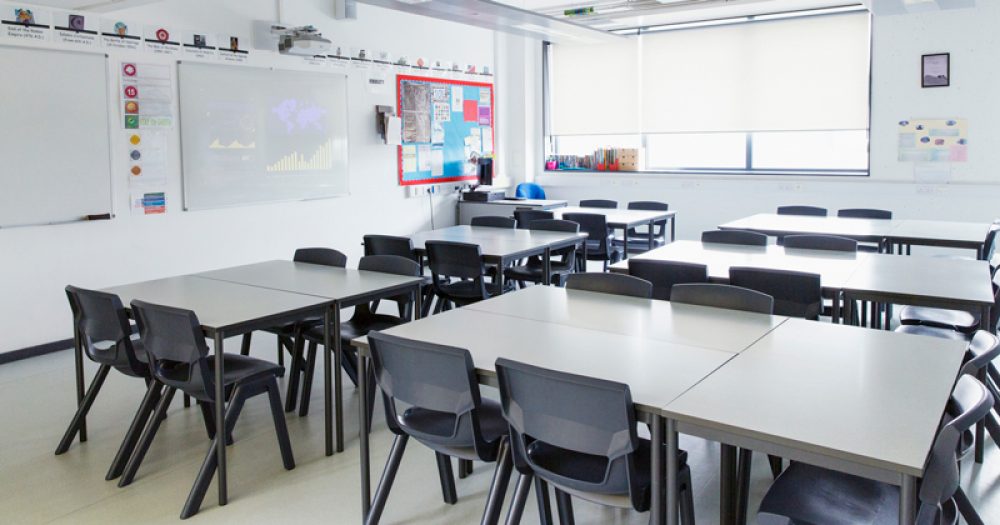The number of pupils at home self-isolating has nearly doubled in a week to over 550,000 – with a surge in cases meaning almost two-thirds of secondary schools have reported pupils being off because of coronavirus.
Today’s weekly attendance figures will add to growing tensions about the disruption spreading through schools, with ministers still to unveil contingency plans for exams next year. One union leader has said schools now have a “chaotic rota system by default”, with attendance at its lowest since the full return of schools.
The problems are most severe at secondary. As of Thursday (November 12), government weekly attendance data shows 64 per cent of state-funded secondary schools had pupils self-isolating who had been asked to do so due to potential contact with a case of coronavirus inside the school. This figure has almost doubled from 38 per cent the previous week.
The number of pupils self isolating has now roughly doubled from between 3.2 to 3.7 per cent in the week after half term, up to between 5.8 to 6.7 per cent last week – meaning up to 552,000 pupils were not in school.
Overall, attendance fell from 89.3 per cent to 86.5 per cent last week – the lowest since schools reopened. School attendance had been above 89 per cent each week since the start of October.
Geoff Barton, general secretary of the Association of School and College Leaders (ASCL) said the “huge increase in the number of secondary schools having to send home pupils to self-isolate” meant schools need to be “given more latitude to move to a planned rota system if they feel that this would be less disruptive, more manageable, and in the best interests of their pupils”.
He said: “We understand the government’s desire to keep all pupils in school full-time. But when nearly two-thirds of secondaries are sending home pupils we have a chaotic rota system by default.”
The report attributes the drop in attendance “mainly due to the increased number of pupils self-isolating due to potential contact with a case of coronavirus”.
Overall, the number of state-funded schools reporting one or more pupils self-isolating due to contact with a Covid case within school jumped from 16 per cent to 29 per cent last week.
The average number of pupils isolating per confirmed Covid case also increased, from 17 pupils on November 5, to 28 on November 12.
While attendance fell from 87 to 83 per cent last week in secondaries, the fall in primaries wasn’t as severe: from 92 per cent to 90 per cent.
The data provided from the DfE gives an overview of the whole country, but does not provide insight into the disparities between different areas.
School leaders in the worst-hit Covid areas previously warned their pupils could be penalised during the summer’s exams as they face more disruption than peers in other areas.
Last month, areas such as Liverpool reported attendance figures up to 25 percentage points lower than the national average.
While Hamid Patel, chief executive of Star Academies, last week warned Covid-19 was widening the education divide between communities.
He said: “We can’t allow young people, already disadvantaged by the educational gap caused by deprivation, to have their prospects further limited by a “Covid penalty”.
The Guardian revealed today that one in four children in Hull are absent from school – representing around 12,000 pupils.
Over half of the city’s 97 schools were partially closed on Monday, with 53 schools sending home full-year groups or ‘bubbles’.
Hull Learning Partnership, which accounts for the majority of the city’s schools, has asked health secretary Matt Hancock to allow its schools to close for all but vulnerable children and the children of key workers.
Barton added more flexibility on rotas would give schools “the ability to deliver direct and remote learning around smaller groups rotating between school and home in a planned manner.
“The government has to recognise reality. The current situation is unsustainable.”
A DfE spokesperson said: “The Chief Medical Officer remains of the view that schools should remain open, and has highlighted the damage caused by not being in education to children’s learning, development and mental health.”








Hello, my grandson has just been told to isolate at home by his secondary school after possible contact with an unamed person (ie not necessarily another pupil) who had tested positive several day previous. There does not seem to be any guidance for the rest of his household – parents and school aged sibling.
We shall avoid contact with our family at least until he receives a neg test result or reaches the end of his isolation period. I can see that in term time this arrangement may help to protect the school population but does little to protect onward transmission into the community.
John